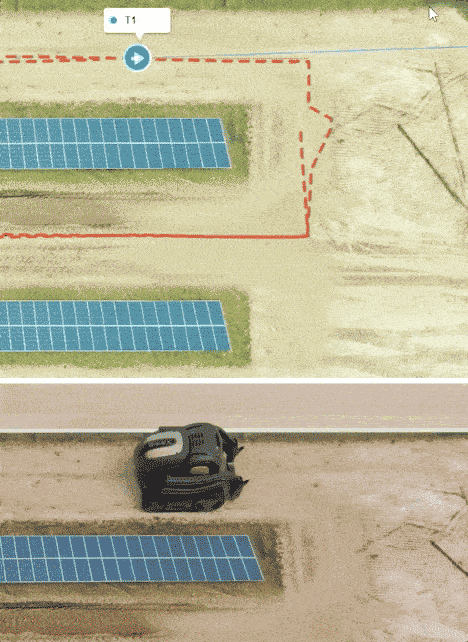United Rentals
Toy Story

Miniaturizing a real-world autonomous robotics solution
The Challenge
Our clients had a clear problem: How would they showcase their turnkey solution for autonomous Solar Site installations, some spanning over 120,000 square feet of land, in the small space of a convention hall room?
Fresh’s cross-disciplinary team of engineers, developers, and designers partnered to illustrate the solution using miniature robots, proprietary software, and a playmat.
Our Solution
At life-scale in the field, the client’s autonomous program included ROC, our Global Path Finder software that powers autonomous vehicles’ navigation. In solar site installations, the autonomous vehicles were Bobcat Compact Track Loaders (CTLs). We used a miniature CTL to represent a life-size Bobcat using the power of ROC.
A massive worksite, miniaturized
Anki Vector, a toy robotics company, had already created “Personal Companion” bots referred to as “Vector.” Each robot included a custom Software Development Kit (SDK) that gave us an added level of control. To simulate our autonomous solar site installation, we programmed customized Vector robots powered by ROC to navigate a playmat, representing the solar site.

Navigating with pinpoint accuracy
ROC interprets obstacles, defined by their geodesic coordinates, and outputs a path of waypoints to ensure safe navigation. On large solar site installations, the curvature of the earth is taken into account. Distances measured over a sphere-like object have different properties than distances measured over a flat surface. ROC considers everything in Geodesic points, which presented a challenge with our flat playmat.
Unable to alter ROC’s interpretation before the trade show, we printed actual satellite imagery embedded with latitudinal and longitudinal coordinates and designed a scaling factor where “real-world” meters were adjusted to centimeters. Then, we wrote a software script to apply the scaling factor and printed digital “map tiles” for that playmat that represented sections of the worksite, visible at varying degrees of zoom.




Localizing the robot with a custom SDK
Anki’s Software Development Kit allowed Vector to track its internal “odometry.” We started by placing Vector directly on the lower-left corner of the mat (0,0), translating its odometry into real-world satellite imagery positioning. ROC displayed Vector’s position in real-time. As the robot traveled, the virtual vehicle representing Vector moved accordingly.
Replicating real-world automation
Fresh UX designers were brought on to create the playmat and the visuals. A key challenge included working with engineers and software developers to ensure physical space was accurately represented. The exhibit needed to run concurrent robot missions, illustrating the value of the use-case: delivering solar panels to multiple areas of the job site, with multiple vehicles.

Illustrating the solution
Six weeks after development began, Fresh deployed the installation at the Total Control Conference in San Antonio, Texas. Fresh developers and robotics engineers explained to attendees how the solution worked. While Toy Story only showed two miniature CTLs working at a time, the real-world solution can run up to thirty vehicles concurrently, which is a significant strategic advantage for any organization looking to differentiate itself via robotic automation.














